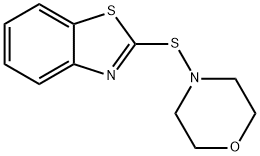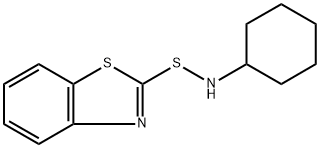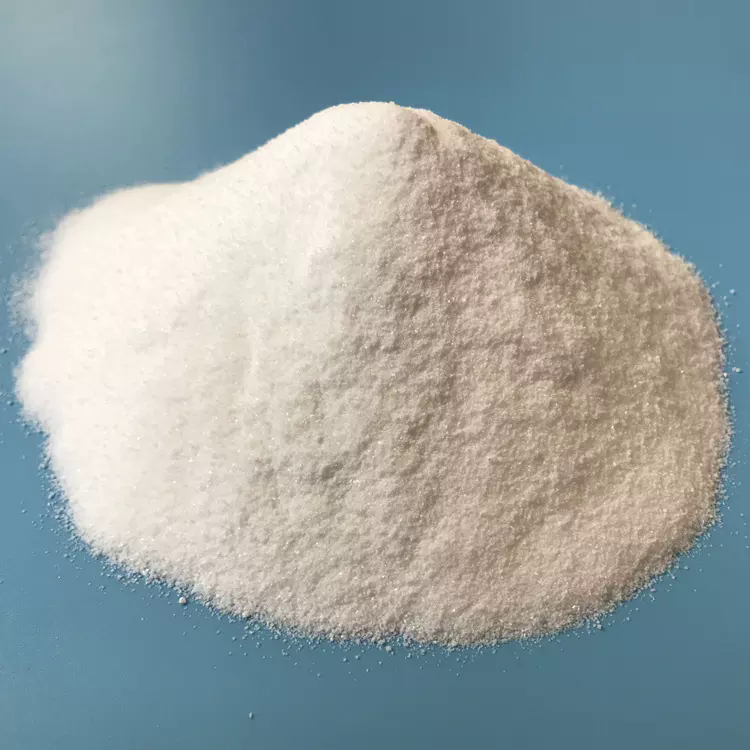ZBC
- CAS NO.:136-23-2
- Empirical Formula: C18H36N2S4Zn
- Molecular Weight: 474.14
- MDL number: MFCD00067274
- EINECS: 205-232-8
- SAFETY DATA SHEET (SDS)
- Update Date: 2024-12-18 14:15:30

What is ZBC?
Chemical properties
White powder; pleasant odor. Soluble in carbon disulfide, benzene, and chloroform; insoluble in water.
The Uses of ZBC
Accelerator for latex dispersions and cements, etc; ultra-accelerator for lubricating oil additive.
The Uses of ZBC
Zinc bis(dibutyldithiocarbamate) is a rubber chemical used as a vulcanization accelerator. It can also be found in paints, glue removers and anticorrosives. It was contained in the "carba-mix".
The Uses of ZBC
Zinc dibutyldithiocarbamate is used as activator; antidegradant; accelerator for natural rubber, butadiene, styrene-butadiene, nitrile-butadiene, butyl rubber, and ethyJene-propylene-diene terpolymers.
Indications
Zinc dibutyldithiocarbamate is approved for use within allergenic epicutaneous patch tests which are indicated for use as an aid in the diagnosis of allergic contact dermatitis (ACD) in persons 6 years of age and older.
Background
Zinc dibutyldithiocarbamate is a dermatological sensitizer and allergen. Sensitivity to zinc dibutyldithiocarbamate may be identified with a clinical patch test.
Definition
ChEBI: Zinc dibutyldithiocarbamate is a dithiocarbamate salt that is the zinc salt of dibutyldithiocarbamic acid. It has a role as an antifungal agrochemical. It is a dithiocarbamate salt and a zinc molecular entity. It contains a dibutyldithiocarbamate and a zinc(2+). It is functionally related to a dibutyldithiocarbamic acid.
Flammability and Explosibility
Non flammable
Contact allergens
A rubber chemical, used as a vulcanization accelerator. It can also be contained in paints, glue removers, and anticorrosive. It was contained in “carba-mix.”
Safety Profile
Poison by intraperitoneal route.Questionable carcinogen with experimental tumorigenicdata. When heated to decomposition it emits very toxicfumes of NOx, ZnO, and SOx.
Metabolism
Not Available
Properties of ZBC
| Melting point: | 104-110°C |
| Boiling point: | 318℃[at 101 325 Pa] |
| Density | 1,21 g/cm3 |
| vapor pressure | 0Pa at 25℃ |
| storage temp. | Inert atmosphere,Room Temperature |
| solubility | Insoluble in water |
| form | solid |
| color | White |
| Specific Gravity | 1.21 |
| Odor | wh. powd., pleasant odor |
| Water Solubility | 100μg/L at 25℃ |
| Hydrolytic Sensitivity | 4: no reaction with water under neutral conditions |
| CAS DataBase Reference | 136-23-2(CAS DataBase Reference) |
| EPA Substance Registry System | Zinc dibutyldithiocarbamate (136-23-2) |
Safety information for ZBC
| Signal word | Warning |
| Pictogram(s) |
 Exclamation Mark Irritant GHS07  Environment GHS09 |
| GHS Hazard Statements |
H315:Skin corrosion/irritation H317:Sensitisation, Skin H319:Serious eye damage/eye irritation H335:Specific target organ toxicity, single exposure;Respiratory tract irritation H410:Hazardous to the aquatic environment, long-term hazard |
| Precautionary Statement Codes |
P261:Avoid breathing dust/fume/gas/mist/vapours/spray. P264:Wash hands thoroughly after handling. P264:Wash skin thouroughly after handling. P273:Avoid release to the environment. P280:Wear protective gloves/protective clothing/eye protection/face protection. P302+P352:IF ON SKIN: wash with plenty of soap and water. P305+P351+P338:IF IN EYES: Rinse cautiously with water for several minutes. Remove contact lenses, if present and easy to do. Continuerinsing. |
Computed Descriptors for ZBC
| InChIKey | BOXSVZNGTQTENJ-UHFFFAOYSA-L |
ZBC manufacturer
Yasho Industries Ltd
Finorchem Limited (Formerly Merchem Limited)
New Products
(S)-3-Aminobutanenitrile hydrochloride 4-Methylphenylacetic acid N-Boc-D-alaninol N-BOC-D/L-ALANINOL Tert-butyl bis(2-chloroethyl)carbamate 3-Morpholino-1-(4-nitrophenyl)-5,6-dihydropyridin- 2(1H)-one Furan-2,5-Dicarboxylic Acid Tropic acid 1-Bromo-3,5-Di-Tert-Butylbenzene S-2-CHLORO PROPIONIC ACID ETHYL ISOCYANOACETATE 2-Bromo-1,3-Bis(Dimethylamino)Trimethinium Hexafluorophosphate 4-IODO BENZOIC ACID 3-NITRO-2-METHYL ANILINE 1-(2,4-DICHLOROPHENYL) ETHANAMINE (2-Hydroxyphenyl)acetonitrile 4-Bromopyrazole 2-(Cyanocyclohexyl)acetic acid 4-methoxy-3,5-dinitropyridine 1-(4-(aminomethyl)benzyl)urea hydrochloride 2-aminopropyl benzoate hydrochloride diethyl 2-(2-((tertbutoxycarbonyl)amino) ethyl)malonate tert-butyl 4- (ureidomethyl)benzylcarbamate Ethyl-2-chloro((4-methoxyphenyl)hydrazono)acetateRelated products of tetrahydrofuran








You may like
-
 136-23-2 Zinc dibutyldithiocarbamate 98%View Details
136-23-2 Zinc dibutyldithiocarbamate 98%View Details
136-23-2 -
 136-23-2 98%View Details
136-23-2 98%View Details
136-23-2 -
 Zinc(II) Dibutyldithiocarbamate CAS 136-23-2View Details
Zinc(II) Dibutyldithiocarbamate CAS 136-23-2View Details
136-23-2 -
 Zinc(II) dibutyldithiocarbamate CAS 136-23-2View Details
Zinc(II) dibutyldithiocarbamate CAS 136-23-2View Details
136-23-2 -
 1975-50-4 98%View Details
1975-50-4 98%View Details
1975-50-4 -
 2-HYDROXY BENZYL ALCOHOL 98%View Details
2-HYDROXY BENZYL ALCOHOL 98%View Details
90-01-7 -
 14714-50-2 (2-Hydroxyphenyl)acetonitrile 98+View Details
14714-50-2 (2-Hydroxyphenyl)acetonitrile 98+View Details
14714-50-2 -
 118753-70-1 98+View Details
118753-70-1 98+View Details
118753-70-1